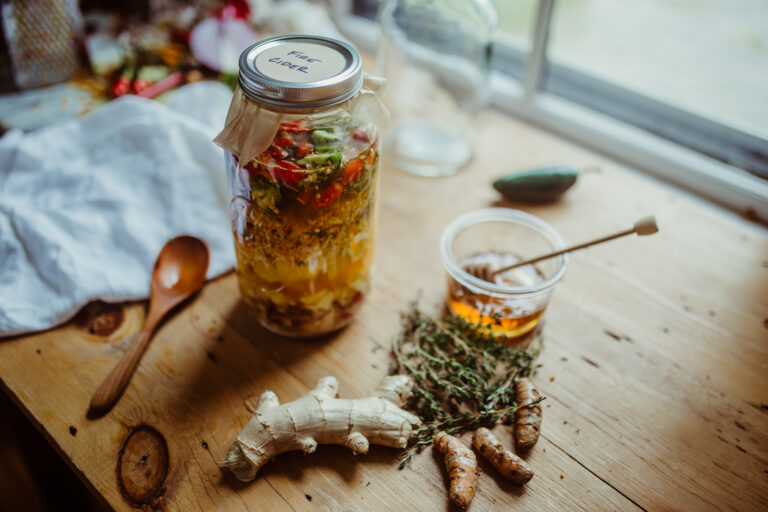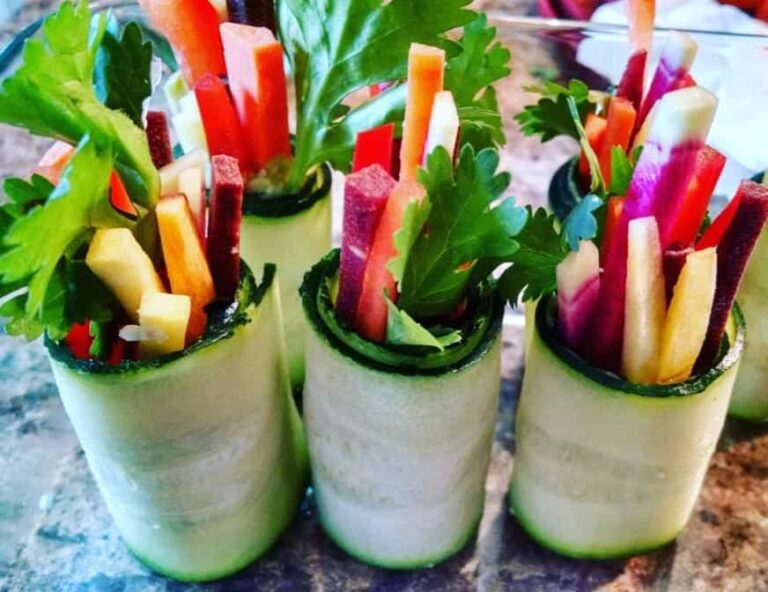From an Ayurvedic perspective, the sweet taste is one of the six fundamental tastes and provides nourishment to your body, mind, and spirit. Because it is so nourishing, people tend to crave the sweet taste. Americans consume about 20 teaspoons of added sugar in the form of sweeteners every day, according to a report from the 2005–2010 National Health and Nutrition Examination Survey (NHANES) database. However, eating too much sugar can bring you out of balance and lead to major health issues, including diabetes, heart disease, and liver disease. With that in mind, many health-conscious folks are asking, “Which sweeteners are best?”
To answer this question, you first need to look at how your body metabolizes three major forms of sugar: glucose, fructose, and sucrose.
- Glucose (also known as dextrose) is the most basic sugar molecule and is the body’s preferred energy source. Most carbohydrates that you eat are processed into glucose, or blood sugar, which your body then immediately uses for energy or stores in muscle or the liver for later use. Your body needs blood sugar levels to stay in a certain range, and the hormone insulin helps regulate these levels. Diabetes is a disease that develops when the body has problems managing insulin and can no longer regulate blood sugar levels.
- Fructose is another simple sugar that is naturally found in fruits. It is sweeter than glucose and sucrose, and in fruit it serves as a marker of ripeness and nutritional density. Various processed sweeteners, such as agave nectar and high-fructose corn syrup, contain varying amounts of fructose, often giving the sweet taste and calories stripped of the nutrients found in whole fruits.
Fructose is lipogenic, which means that it is quickly turned into fat. Almost all of the fructose you ingest is metabolized in the liver, and much of it is then stored as fat and glycogen. In addition, the metabolism of fructose creates free radicals as well as uric acid, which can lead to gout and elevated blood pressure. Another drawback to fructose is that, unlike glucose, it doesn’t curb your appetite when you eat it. In biological terms, fructose doesn’t lower ghrelin, a major appetite-stimulating hormone. Therefore, when you eat a fructose-sweetened food, even though you’re consuming calories, you will continue to feel cravings and can easily end up overeating.
It’s best to eat fructose in the form of whole fruits and honey where the wholeness of the food prevents overeating—and avoid consumption of concentrated sweeteners such as agave nectar and high-fructose corn syrup, especially in sweetened beverages.
- Sucrose is a combination of glucose and fructose and is commonly found in table sugar made from sugarcane or sugar beets. It’s also found in corn and other plants. When you eat sucrose, your body breaks it down into individual molecules of fructose and glucose.
Here’s a look at the major sweeteners and how they affect your mind-body physiology.
Artificial Sweeteners
Artificial sweeteners such as sucralose, aspartame, and saccharin get their sweetness from chemicals other than the three sugars of glucose, fructose, and sucrose. While they may be low- or no calorie, they have no nutritional benefits and should be avoided. Recent studies show that artificial sweeteners may actually lead to an increased risk of obesity and diabetes, the very thing that they were designed to avoid.
Most artificial sweeteners are thousands of times sweeter than natural sugars. Consuming artificial sweeteners changes your ability to regulate appetite and hunger because of the loss of a connection between a sweet taste and a high-calorie food. You eat something that tastes sweet, but you don’t get the signaling in your body that registers fullness and satiation, so you end up going back for more. In addition, consuming these super-sweet tastes alters your taste perception and causes you to crave sweeter and sweeter tastes.
White Sugar
This sweet crystalline substance is mainly extracted from sugarcane or sugar beets. This processed sugar gets its sweetness from sucrose, which is broken down by the body into an even ratio of glucose (50 percent) and fructose (50 percent).
Note: If the label on a sugar package doesn’t say the product comes from sugarcane, then most likely it comes from sugar beets, which are a heavily genetically modified (GMO) food. I advise everyone to avoid GMO foods, so be sure to buy sugar that is labeled as USDA certified organic or non-GMO product verified.
Evaporated Cane Juice
This form of sugar is made from fresh sugarcane juice that is evaporated and then crystallized. Other than a slight flavor difference and some trace minerals, cane juice has no added benefit over table sugar.
Molasses
This thick syrup is the byproduct when sugarcane is processed to make refined sugar. Blackstrap molasses has a bittersweet taste and contains minerals and nutrients such as iron, calcium, manganese, copper, and potassium. One tablespoon provides 12.2 grams of sugar (just slightly less than table sugar) and converts to glucose more slowly than table sugar.
Coconut Sugar
Also known as coconut palm sugar, coconut sugar is made from the sap of the coconut palm. It has the same number of calories and carbohydrates as table sugar. It is dark like brown sugar, which is a partially refined sugar that contains some amount of molasses, and has a similar taste. Coconut sugar has been touted in the press recently for containing 70 to 79 percent sucrose, and only 3 to 9 percent fructose and glucose. However, since sucrose breaks down in the body in a 1 to 1 ratio of fructose to glucose, coconut sugar actually contains between 38 percent to 50 percent fructose, and thus may not be much better than table sugar. Some brands may mix coconut sugar with cane sugar and other ingredients.
Palm Sugar
Also known as date palm sugar or date sugar, palm sugar is made by pulverizing dates into a powder, so it’s not a processed sugar and contains all of the nutrients found in dates, including potassium, magnesium, and calcium. Palm sugar clumps and doesn’t melt so it’s not a great substitute for white sugar, but may be a good substitute in some recipes calling for brown sugar. It is often used in Southeast Asian and Indian cooking.
Honey
Honey consists of glucose and up to 40 to 50 percent fructose (ranges vary), and it has antioxidants and trace amounts of vitamins and minerals. While raw or unrefined honey has a glycemic index of about 30, processed honey can be much higher meaning it is converted more rapidly to glucose and can spike blood sugars. Processed honey is also stripped of the nutrients contained in raw or unrefined honey. In Ayurveda, honey is viewed as the best sweetener and is used medicinally as well as in food. According to Ayurveda, honey should never be cooked.
Maple Syrup
As its name implies, maple syrup is extracted from the sap of a maple tree. Different grades of maple syrup relate to the darkness of the syrup, and the darker ones have a stronger maple flavor. It contains some minerals, including manganese, zinc, iron, calcium, and potassium, as well as antioxidants (darker syrups have higher antioxidant levels). Maple syrup consists of about 65 percent sucrose and has less fructose than honey. I enjoy using small amounts of grade-B maple syrup as a sweetener in my cooking.
Stevia
A plant called stevia rebaudiana is the source of the sweeteners sold in supermarkets and in packets served with your coffee. Last year I came across a stevia plant and bit a piece of the leaf and was amazed by the sweetness as I chewed it. Keep in mind that the stevia sold in packets isn’t a plant. It’s a white, powdery substance or liquid that has been extracted from the plant and is about 200 times sweeter than table sugar.
While stevia has zero calories and doesn’t affect glucose or insulin levels, be mindful of the amount that you use. Just one teaspoon of liquid stevia is equivalent in sweetness to a whole cup of sugar. I have not yet come across any brain studies of stevia, but suspect that the super-sweetness without the caloric messaging to your brain to signal fullness might cause you to crave more sweet foods. Stevia can be used in baking. Some of the stevia products found in many grocery stores contain other ingredients such as erythritol and dextrose (which is actually a form of glucose) so read your labels and make sure you’re buying the best source of this sweetener.
Sugar Alcohols
Sugar alcohols naturally occur in foods and are sometimes used as sugar substitutes in many “sugar-free” products such as candies, gum, and many processed foods. Examples include xylitol, sorbitol, and erythritol. Sugar alcohols contain 1/2 to 1/3 fewer calories than table sugar and are not as sweet as sugar. Some forms may not spike blood sugar and insulin levels because they are not digested easily. However, this also leads to potential side effects such as gas, bloating, and diarrhea.
Agave Nectar and Syrup
Higher in fructose than high-fructose corn syrup, agave nectar is on my list of health-food imposters. In the agave plant, most of the sweetness comes from a type of fructose called inulin, which is a fiber that has some health benefits. However, the inulin is processed into a syrup that has a fructose content estimated to be as high as 90 percent without the benefit of the fiber. As a comparison, the much-maligned high-fructose corn syrup has about 55 percent fructose.
Brown Rice Syrup
Processed from brown rice, this syrup is no health food either and may even contain gluten as well as arsenic. It is often added to foods such as cereal, protein bars, and baby formulas.
The Final Tally
So which sweetener is best? In reality, there isn’t much difference between white table sugar and other natural sweeteners, including coconut sugar, honey, maple syrup, and molasses. To the body they are all sugar to be converted to glucose for metabolic fuel.
What’s the important take-home point? Too much sweet food, in any form, brings the body-mind out of balance. Eating more food—of any kind—than you need, will push your body into storage mode and create a variety of health issues. Therefore, all forms of sweets are best in moderation.
Living the Sweet Life
Here are a few tips for cutting back your consumption of sugar while still enjoying sweetness in your life.
- Enjoy dessert as an occasional treat rather than as a daily event. When you do indulge, choose a treat with high-quality ingredients and savor the experience. Instead of eating a cheap chocolate bar on the run, buy yourself a delicious chocolate truffle or something else you love, and eat it with conscious awareness.
- Limit or avoid sweetened beverages in all forms, this includes adding sweeteners to your healthy teas. Water should be the primary liquid that you consume. If you need some extra zing, try adding mint leaves, whole chunks of fruit like citrus slices or berries, or sliced cucumbers. You can also try herbal teas, many of which have a natural sweetness as well as other potential health benefits.
- There’s a lot of added sugar in processed foods, including cereal and protein bars, commercial yogurt, and condiments such as ketchup. Read the labels carefully and choose products that minimize added sugar. Better yet, start to reduce your consumption of processed foods in favor of fresh, whole foods such as delicious fruits and vegetables, nuts, and seeds. When you do buy prepared foods, choose those made with just a few ingredients.
As you reduce the amount of added sugars you consume, you will need less to appreciate the sweet taste.





Reblogged this on It is Well with Leilani and commented:
The more I look into the health of my family and what we are actually putting into our bodies (what I purchase at the grocery store), the more I realize there are so many healthier choices we can make. Have you thought about the type of sugars you ingest and where they actually come from? I hadn’t until I read Misty’s blog about it. Check it out, and then check your pantry. Our family has been a slave to sugar for far too long. Time to make a change…